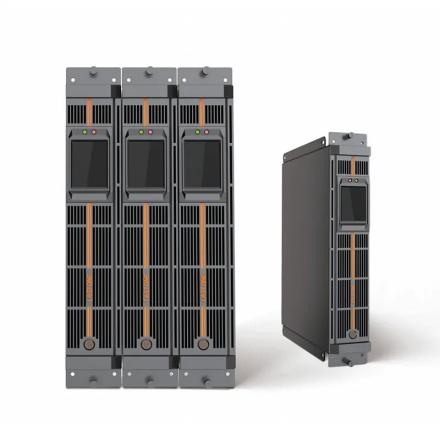Why is power quality so critical today when industrial equipment is increasingly dependent on stable electricity? The intelligent power quality integrated management module is designed for outdoor JP cabinets to solve this pain point. Its ultra-thin body (weight <12 kg, height only 2U/≤8.9 cm) uses a compact layout to easily adapt to various environments, providing comprehensive power quality management and ending the “black box” operation and maintenance mode of the power distribution room.
The module’s innovative cooling system adopts a low-fan strategy with noise levels below 45dB while enhancing heat dissipation performance. The honeycomb air duct design ensures stable operation under harsh conditions such as -10°C to +40°C temperatures, 95% humidity and 1,500 meters above sea level (power drops by only 1% per 100 meters), effectively maintaining equipment efficiency.
The user-friendly hot-swap function supports live expansion and maintenance without downtime, which is particularly suitable for uninterrupted power supply scenarios; the lightweight design facilitates quick integration into outdoor JP cabinets, helping users ensure power quality reliability with minimal effort.
The intelligent power quality integrated management module adopts industrial-grade electrical design standards, has a wide voltage adaptability of 380V±20% (304V-456V), can operate stably in the frequency range of 45-55Hz, and is perfectly compatible with the global mainstream power standards;
Its three-phase four-wire architecture supports various grounding system configurations such as TN-S/TN-CS/TT, and is combined with a wide range of current transformers from 100/5 to 5000/5 (minimum resolution 0.5A) to achieve high-precision monitoring of voltage harmonics THDv<1% and current harmonics THDi<3%. The innovative use of a three-level topology enables the power conversion efficiency to exceed 97%, reducing switching losses by 40% compared to traditional solutions.
By ensuring the best power quality, this module has been applied in scenarios such as new energy charging stations. After deployment, voltage sag accidents have been reduced by 90%. It not only improves grid reliability, but also reduces operating costs by 12%, becoming a strategic investment for enterprises to cope with harsh environments.
Post time: Jul-25-2025




